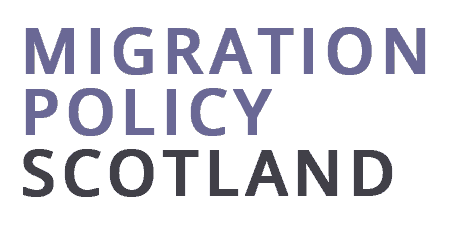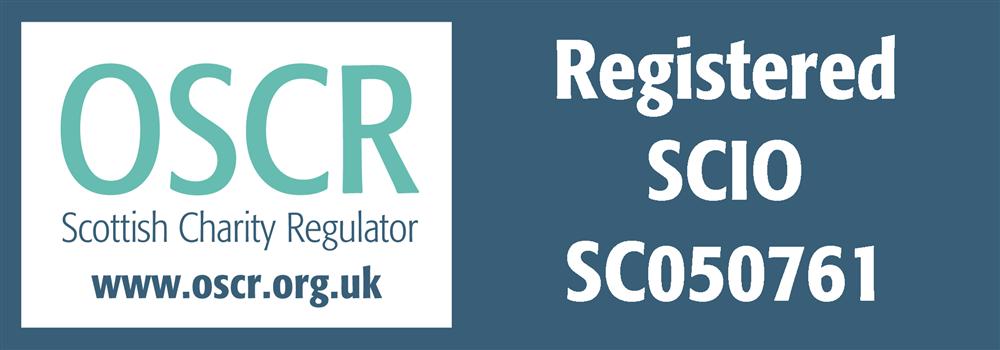Blog by Sarah Kyambi, Migration Policy Scotland
It is surprising in light of the draconian approach to small boat crossings and asylum generally to realise that at the same time the UK’s immigration system has evolved to open up ‘complementary pathways’.
These are ‘safe and legal’ routes to the UK for people who have protection needs. While Migration Policy Scotland’s focus is on non-protection migration, we recognise that effective work on migration policy requires an adequate understanding of the immigration system as a whole and how its different aspects and parts interact. This underpins an interest at Migration Policy Scotland in developing better insight on complementary pathways and on how those arriving to Scotland under these routes are faring. Developments regarding complementary pathways mark a moment of positive innovation within migration systems in both the UK and globally where, all too often, new proposals instead provoke concerns about the erosion of human rights protections or a world-weary sense déjà vu.
In terms of overall arrivals to the UK, two complementary pathways have contributed significant numbers to unusually high net migration in 2022 and 2023 – although the numbers arriving under both routes are now falling. By the end of September 2023, 188,900 people had arrived from Ukraine, of which 71% came through sponsorship schemes, and over 120,000 Hong Kongers had arrived under the British National (Overseas) route. How are these routes functioning in Scotland? The Scottish Government’s support for asylum and refugee protection and its view that Scotland requires immigration to support its economy and mitigate demographic pressures raises the expectation that the opportunities complementary pathways offer would be actively pursued.
Before addressing this question, it is worth sketching out the global context in which complementary pathways have emerged. The New York Declaration for Refugees and Migrants was agreed by UN member states in 2016. This Declaration recognises the international responsibility to protect and shelter those forced to flee is a shared responsibility and that it needs to be shared more equitably and predictably. The Global Refugee Forum that met earlier this month in Geneva is the mechanism by which arrangements relating to the Declaration are followed up and reviewed. These arrangements are formalised in the 2018 Global Compact for Refugees which has four key objectives. To:
- Ease the pressures on host countries.
- Enhance refugee self-reliance.
- Expand third country solutions.
- Support conditions in countries of origin for return in safety and dignity.
Within the Global Compact for Refugees a strategy for resettlement and complementary pathways sets out its goals as: to grow resettlement, to advance complementary pathways and to build the foundation for this by promoting welcoming and inclusive societies. Complementary pathways are defined as:
“safe and regulated avenues for refugees that complement resettlement by providing lawful stay in a third country where their international protection needs are met. They are additional to resettlement and do not substitute the protection afforded to refugees under the international protection regime. Complementary pathways include existing admission avenues that refugees may be eligible to apply to, but which may require operational adjustments to facilitate refugee access.” (UNHCR 2019)
Complementary pathways can include family reunification procedures, humanitarian routes and visas, community sponsorship and education, employment (or other) opportunities for refugees.
In keeping with this effort at global level, the UK has seen a proliferation in refugee resettlement schemes (e.g.: Vulnerable Persons Resettlement Scheme, the Mandate Resettlement Scheme, Afghan Citizens Resettlement Scheme), the development of routes for particular groups with protection needs (e.g.: for Ukrainians and Hong Kongers), the development community sponsorship for refugee resettlement and a ‘Displaced Talent Mobility Pilot’.
The ‘Displaced Talent Mobility Pilot’, designed with Talent Beyond Boundaries, launched in 2021 with the aim to support 50-100 refugees and their families relocate under the Skilled Worker route to work in sectors such as IT, construction and engineering and with protections against return should employment cease. At the end of 2022 just under 500 people had found durable solutions in the UK through this scheme. Community sponsorship has resulted in around 1,000 arrivals since 2016. Resettlement and relocation schemes have seen a total of just over 50,000 people resettled between 2015 and September 2023. One might dispute how well these initiatives match to protection needs or how durable the solutions offered may be, but they do provide new routes or mechanisms of entry often on comparatively generous terms. And while entry is restricted to specified groups these new mechanism may offer new ways to engage communities in providing welcome that can help build public support for the principle of protection. More in Common found refugee sponsorship increased support for accepting more refugees by 12 percentage points and reduced opposition by 14 percentage points.
What we know of the experience in Scotland so far in relation to complementary pathways is mixed. Scotland has seen proportionately more arrivals per capita from Ukraine than any other UK nation. 25,685 had arrived in Scotland by 30 September 2023 (20, 416 of them sponsored by the Scottish Government). This mirrors Scotland’s involvement in resettlement. Since 2015 all Scottish Local Authorities have participated, and the numbers resettled in Scotland are proportionately high. However, turning to the experiences of Hong Kongers, a survey suggests that those arriving in the UK through the BN(O) route are underrepresented in Scotland with just 4% located in Scotland (Scottish population is around 8% of the UK total). Community sponsorship has also not gained much traction in Scotland.
With a smaller migrant population and less experience as a migrant destination, there is a greater role for government in ensuring prospective migrants under complementary pathways come to Scotland rather than the more familiar migrant destinations south of the border. Ensuring the experiences of those that do arrive are positive will also help to promote Scotland as an attractive destination under these schemes. While the New Scots Strategy for refugee integration sets a high bar, the experience of the super sponsorship scheme for Ukrainians emphasizes the need for more considered planning. Here the high initial uptake led to arrivals being accommodated on passenger ships docked in Edinburgh and Glasgow, and the scheme being paused in July 2022. A review of the super sponsor element published in November 2022 sets out 7 criteria to be met ahead of the scheme reopening to ensure a future plan is ‘safe and deliverable’. It also included 16 interventions aiming to improve performance under the scheme. The need for sufficient resource to support local government (and community) capacity to welcome arrivals and to boost the stock of available accommodation emerge as key. These remain as core strategic aims of the follow-on policy position paper A Warm Scots Future (September 2023).
The response to the outbreak of war in Ukraine was in some ways unique. Across a wide range of European states it called forth distinctive protection routes and initiatives in response to the shock of a new war on the continent. Nevertheless, the response in Scotland also highlights underlying weaknesses in the ways in which such new approaches to protection are evolving generally. The ad hoc nature of developments on complementary pathways can exacerbate practical and planning difficulties. Different routes are created with different eligibility criteria and entitlements complicating an already over-complex immigration system. Different funding streams and mechanisms fragment local government efforts to provide support for new arrivals. There is a lack of clarity on the sufficiency of funding to meet stated objectives or to understand fully how funding for existing groups is impacted by new funding for new routes. Siloed thinking often means arrangements to accommodate new inflows are not matched to areas where their presence could help with demographic challenges. Or that aspirations to locate people in such areas are insufficiently matched by deeper understandings of their needs and development of a range of services and initiatives to practically support these. Short-term thinking risks obscuring a longer-term vision, evaluation and review.
At Migration Policy Scotland we are interested in understanding better how these new development in the UK’s immigration system are playing out in Scotland. Through a master’s dissertation placement we plan to work with students from the Universities of Edinburgh, Glasgow and Stirling to develop research that furthers our knowledge of the benefits and difficulties these new ways of managing migration pose. What are the experiences of those arriving to Scotland through complementary pathways? How well are different stakeholders placed to plan for and support the arrival and retention of these newcomers? How can we make the best use of the prospect complementary pathways offer to reshape and reinvigorate our understanding and practice of welcome and integration?
Dr Sarah Kyambi is the Founder and Director of Migration Policy Scotland. You can find out more about her and about our Migrant LEx Panel here.


